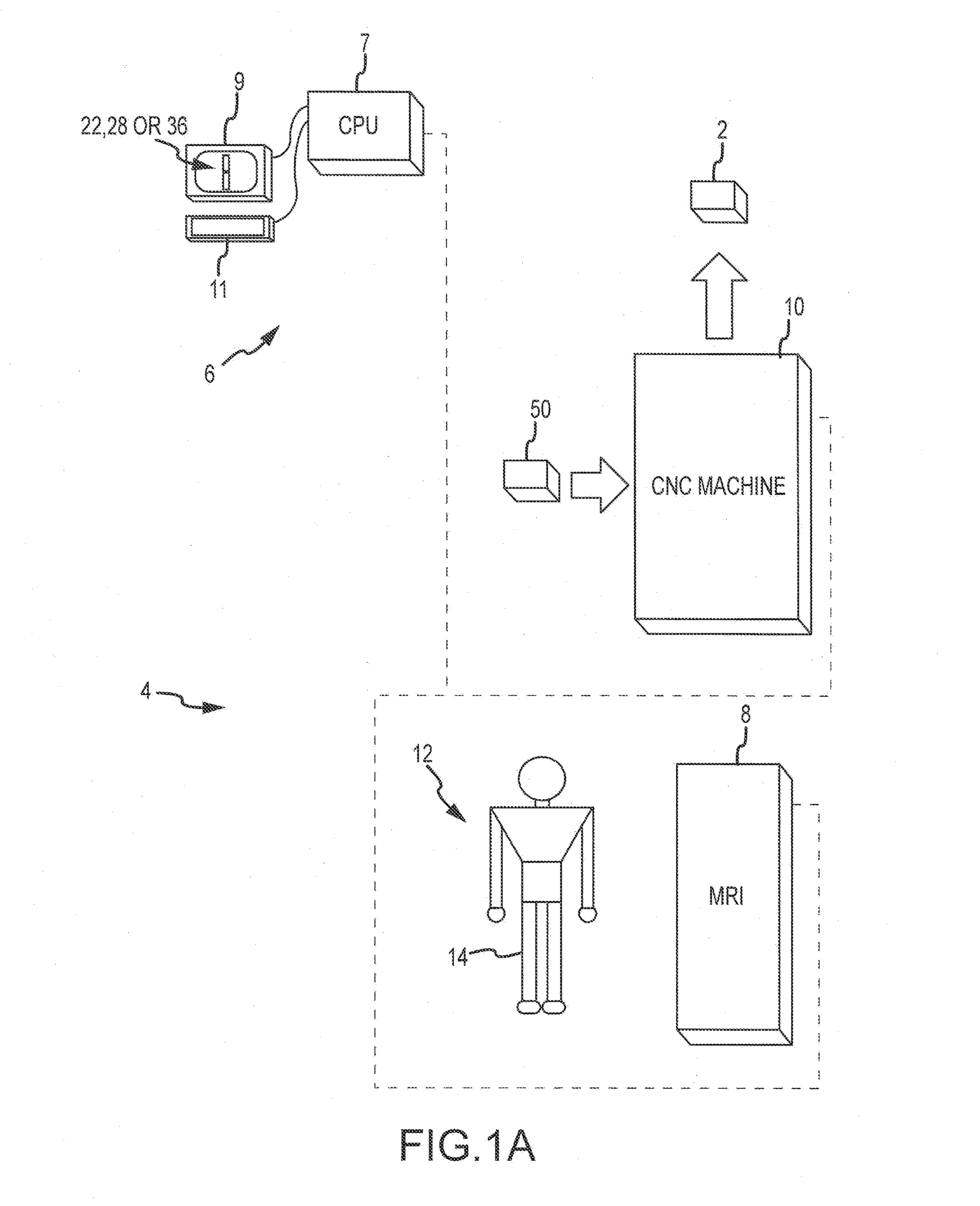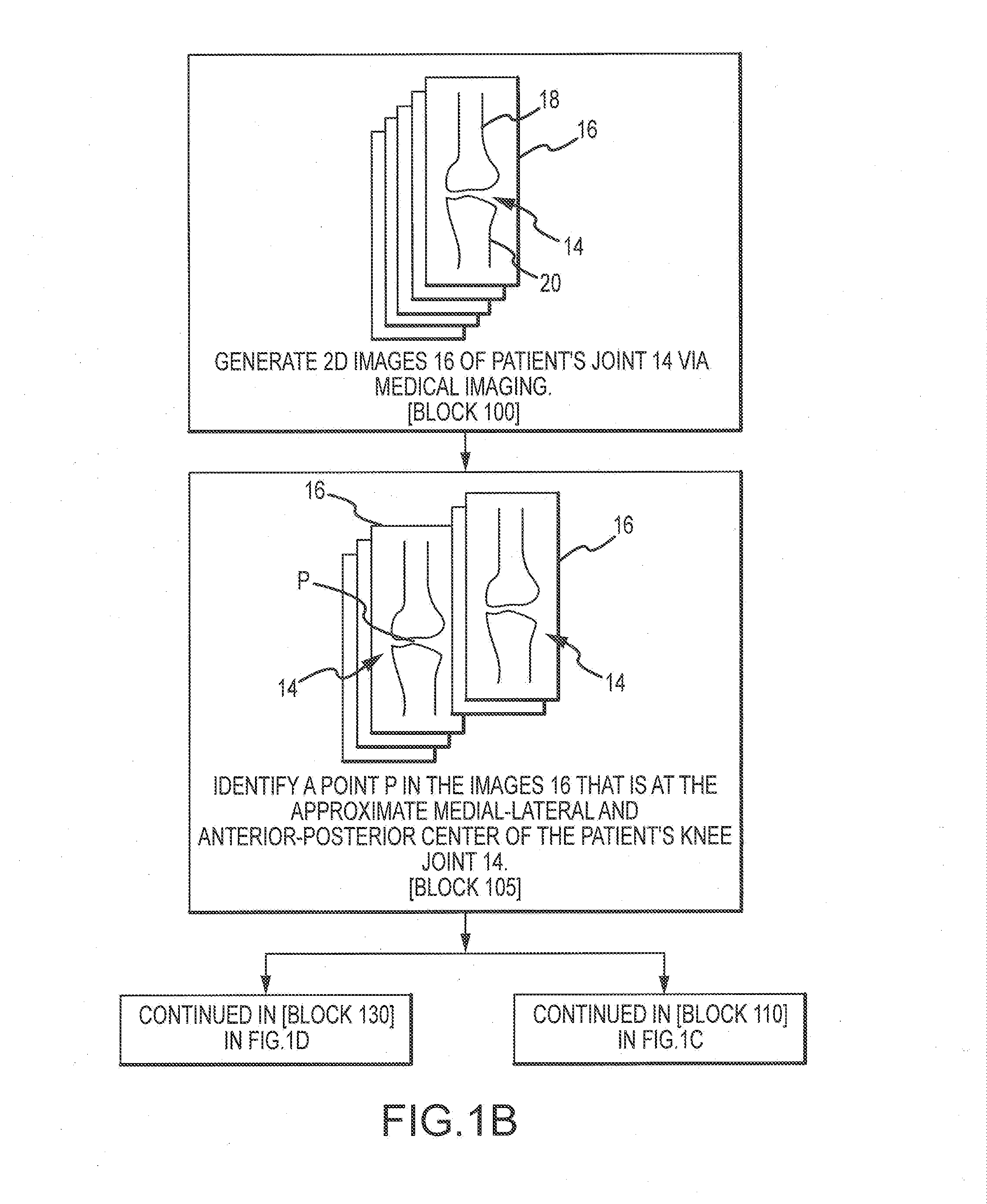System and method for manufacturing arthroplasty jigs having improved mating accuracy
a cutting jig and arthroplasty technology, applied in the field of systems and methods for manufacturing customized arthroplasty cutting jigs, can solve the problems of pain, stiffness, decreased mobility, and damage to the bones and joints, and achieve the effects of improving the accuracy of cutting, and improving the quality of cutting
- Summary
- Abstract
- Description
- Claims
- Application Information
AI Technical Summary
Benefits of technology
Problems solved by technology
Method used
Image
Examples
Embodiment Construction
[0117]Disclosed herein are customized arthroplasty jigs 2 and systems 4 for, and methods of, producing such jigs 2. The jigs 2 are customized to fit specific bone surfaces of specific patients. Depending on the embodiment and to a greater or lesser extent, the jigs 2 are automatically planned and generated and may be similar to those disclosed in these three U.S. patent applications: U.S. patent application Ser. No. 11 / 656,323 to Park et al., titled “Arthroplasty Devices and Related Methods” and filed Jan. 19, 2007; U.S. patent application Ser. No. 10 / 146,862 to Park et al., titled “Improved Total Joint Arthroplasty System” and filed May 15, 2002; and U.S. patent Ser. No. 11 / 642,385 to Park et al., titled “Arthroplasty Devices and Related Methods” and filed Dec. 19, 2006. The disclosures of these three U.S. patent applications are incorporated by reference in their entireties into this Detailed Description.
[0118]a. Overview of System and Method for Manufacturing Customized Arthropla...
PUM
 Login to View More
Login to View More Abstract
Description
Claims
Application Information
 Login to View More
Login to View More - R&D
- Intellectual Property
- Life Sciences
- Materials
- Tech Scout
- Unparalleled Data Quality
- Higher Quality Content
- 60% Fewer Hallucinations
Browse by: Latest US Patents, China's latest patents, Technical Efficacy Thesaurus, Application Domain, Technology Topic, Popular Technical Reports.
© 2025 PatSnap. All rights reserved.Legal|Privacy policy|Modern Slavery Act Transparency Statement|Sitemap|About US| Contact US: help@patsnap.com



